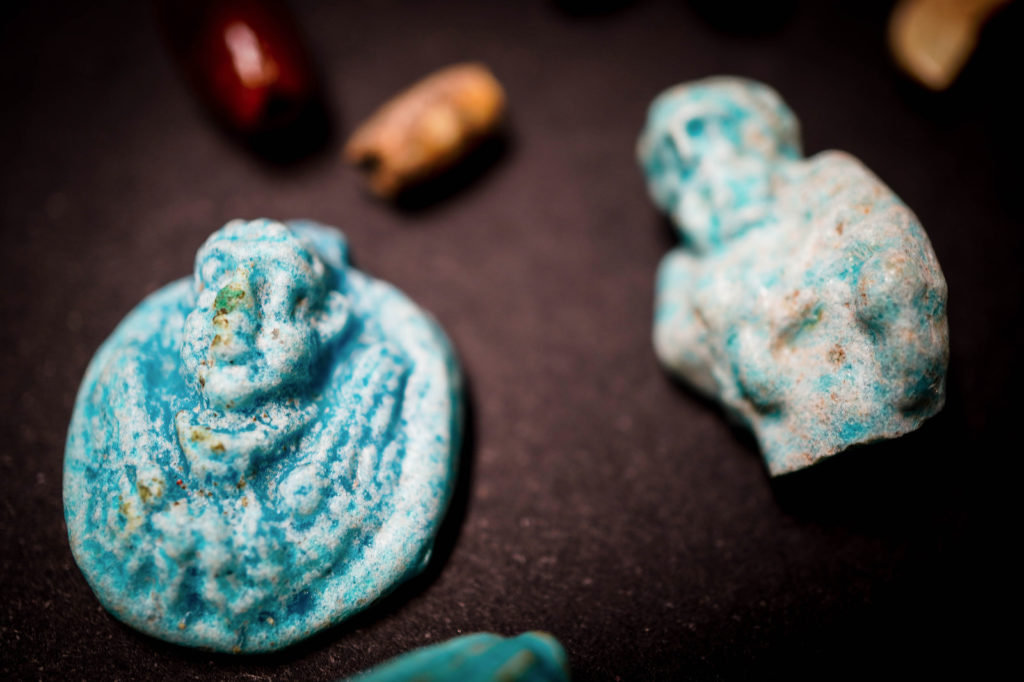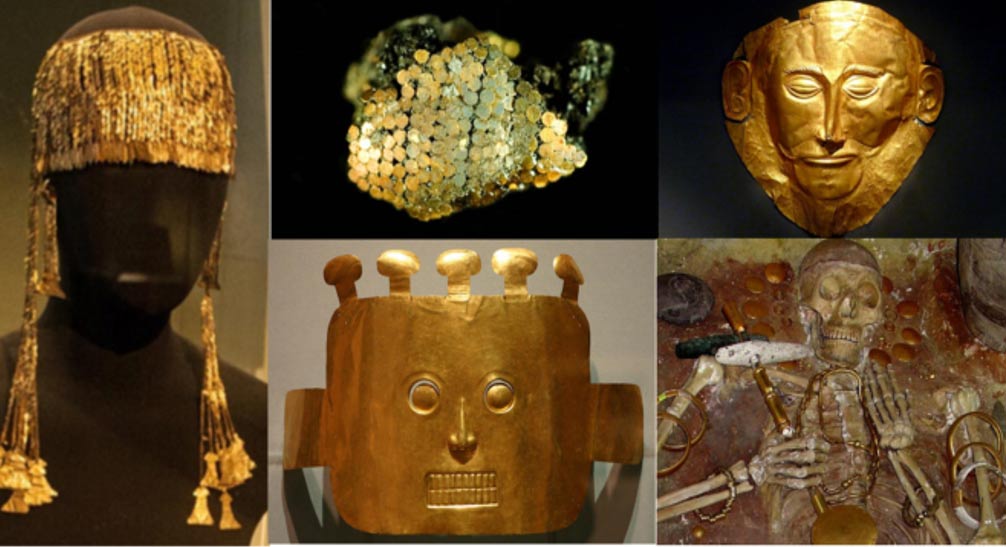Destroyed by an eruption of volcanic Mount Vesuvius in AD 79, the ancient Roman city of Pompeii still has a few remarkable surprises in store for archaeologists. One such surprise was the sorceress’ kit discovered in the House of the Garden in 2019.
The kit is a collection of charms that would have been used for various types of magic and fortune-telling. The 100 or so objects were originally kept in a small wooden box, of which only the bronze hinges remained.
The collection of charms was not the only discovery made by archaeologists in the house in the city area now known as Regio V. In one room they also found the remains of 10 women and children. According to the Archaeological Park of Pompeii’s director general, Massimo Osanna, the team will use DNA analysis to determine possible relationships between the victims. He added that the charms may have belonged to one of the people in that room.

Charms For Luck And Love
Among the charms that comprise the cache were two mirrors, decorative pieces of amber, bone, bronze, and faïence, bone buttons, and glass paste carvings of Dionysus and a dancing satyr. The collection also included a glass ointment bottle, an amethyst carved with a woman’s figure, a carnelian featuring a carving of a craftsman, a carving of Harpocrates, carved skulls, tiny dolls, and pendants shaped like an ear, a fist, and penises.
Osanna said that, while archaeologists continue to study the amulets in the hope of determining their various functions, they most likely were used to attract good luck, to promote fertility, and to repel bad luck. Some may also have been used for fortune telling, such as making predictions about pregnancy and childbirth. Imagine how exciting it would be if similar charms worked when you bet at Australian betting sites.
He explained that such charms would have been part of everyday life for many Roman women, and that this collection was extraordinary because it provides mini biographies of some of the inhabitants of the ill-fated city.
Possibly Owned By A Servant
Although amber as well as the glass paste and gem carvings are of good quality, there were no gold or particularly valuable items in the collection. Osanna told reporters that this may indicate that the owner may have been a servant or a slave of whoever owned the Garden House.
The park’s director general also explained that the pendants and other items were not the sort of jewellery that Roman women would have worn to enhance their beauty. Instead, they were more than likely worn during magical rituals.
In addition to the fascinating collection of sorceress’ charms, archaeologists working in Regio V also found a well-preserved fresco based on the myth of Leda’s seduction by Jupiter in the form of a swan, and a horse that died shortly after its owner saddled it up in the hope of fleeing the city.
Another fascinating discovery made in Pompeii in 2019 was an inscription that forced historians to revise their dating of the eruption of Mount Vesuvius. For centuries, it was thought that the city was destroyed in August AD 79. However, the eruption probably took place in October.



